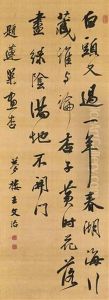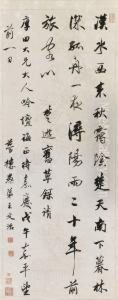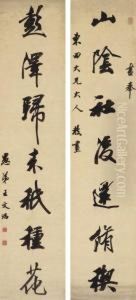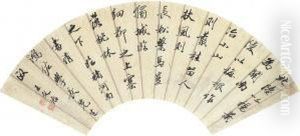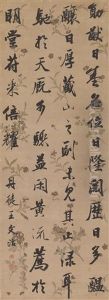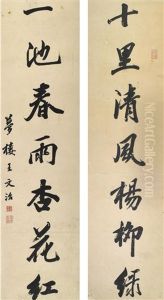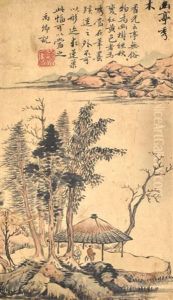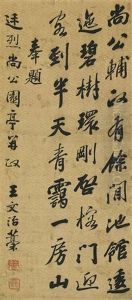Wang Wenzhi Paintings
Wang Wenzhi was a Chinese artist, calligrapher, and scholar of the Qing Dynasty, known for his accomplishments in the arts and his contributions to the intellectual life of his time. Born in 1730 in Fujian Province, Wang was a part of the scholarly elite and passed the imperial civil service examinations, marking him as a man of learning and talent. He became a member of the Hanlin Academy, an elite institution responsible for matters related to scholarship and statecraft.
Wang Wenzhi was particularly celebrated for his calligraphy, which was characterized by its elegant and fluid style. His work is often cited as an example of the 'stele school' of calligraphy, which sought to emulate the ancient inscriptions found on stone steles. His calligraphic style had a profound influence on later generations, and he is often regarded as one of the leading calligraphers of the Qing Dynasty.
In addition to his skills in calligraphy, Wang Wenzhi was also a respected painter, though his works in this field are less well-documented. Like many literati of his time, he was adept at poetry and was involved in the intellectual discussions of the era. He was known for his adherence to Confucian principles and the promotion of traditional values in a period of social and political complexity.
Wang Wenzhi's life spanned a period of significant change in China, as the Qing Dynasty experienced both the height of its cultural achievements and the beginning of its decline. His works and intellectual contributions reflect the rich cultural milieu of the 18th century. He passed away in 1802, leaving behind a legacy that would endure in the realms of Chinese calligraphy and scholarly tradition. His works are still studied and admired for their aesthetic beauty and historical significance.
